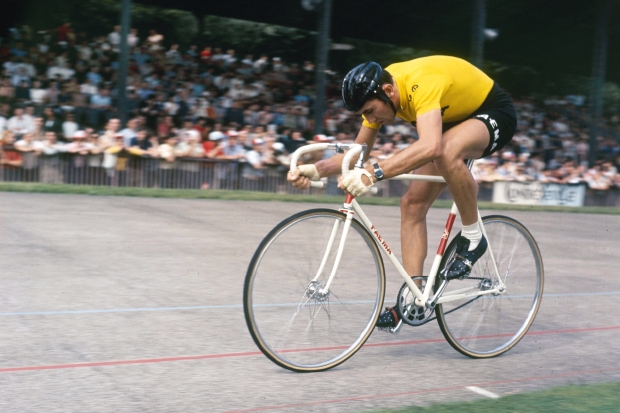It’s extraordinary that it took civilisation so very long to discover the benefits of putting little wheels on suitcases. We knew how to fly before we realised it was no longer necessary to huff-and-puff baggage by hand.
Even odder, steam and electricity were well understood before anyone got around to developing the ingeniously simple pedal-and-crank mechanism, an invention of decisive importance, which turned the ludicrous, wobbly old hobbyhorse into today’s smooth and sensible bicycle. Its eventual triumph over all our sensibilities can be seen today when, at some practical cost to the general mobility of the capital, London is being effortfully retrofitted with cycle lanes while oil-fired traffic is perpetually stalled in a noxious smog of its own making.
Cycle Revolution is the very last exhibition at the original Design Museum in Butler’s Wharf before it moves ambitiously, perhaps overambitiously, to new premises in a repurposed Commonwealth Institute in Kensington. So there is something both autumnal and prospectus-like about it as an event. In this way, it provides an interesting opportunity to wonder about both the nature of design exhibitions in general and the status of the bicycle in particular.
Designers and politicians are equally drawn — and with unusual passion —towards the bicycle. It is tempting to make a connection between pedal-power and democracy what with the bicycle’s historical associations with suffrage movements, women liberated into bloomers and social mobility of the real sort. After all, states with the most immaculate conception of social democracy — Holland and Denmark, for example — have specially vigorous bicycling cultures. But so too does the People’s Republic of China. When Dave wanted to appear as a man of the people, he got on his bike for a photo shoot. And so too did Corbyn, although they were dressed rather differently. With conflicting data like this, it’s tricky to posit a reliable theory.
The fascination of designers and architects is easier to explain.








Comments
Join the debate for just £1 a month
Be part of the conversation with other Spectator readers by getting your first three months for £3.
UNLOCK ACCESS Just £1 a monthAlready a subscriber? Log in